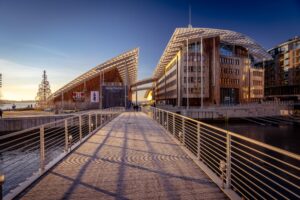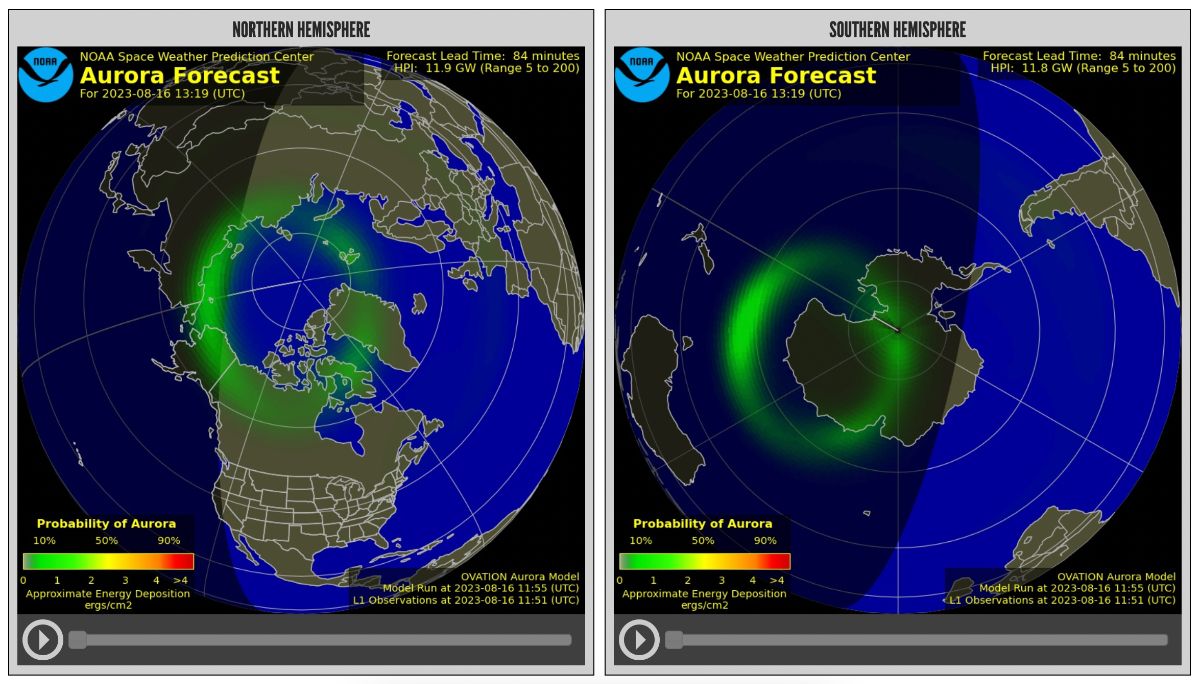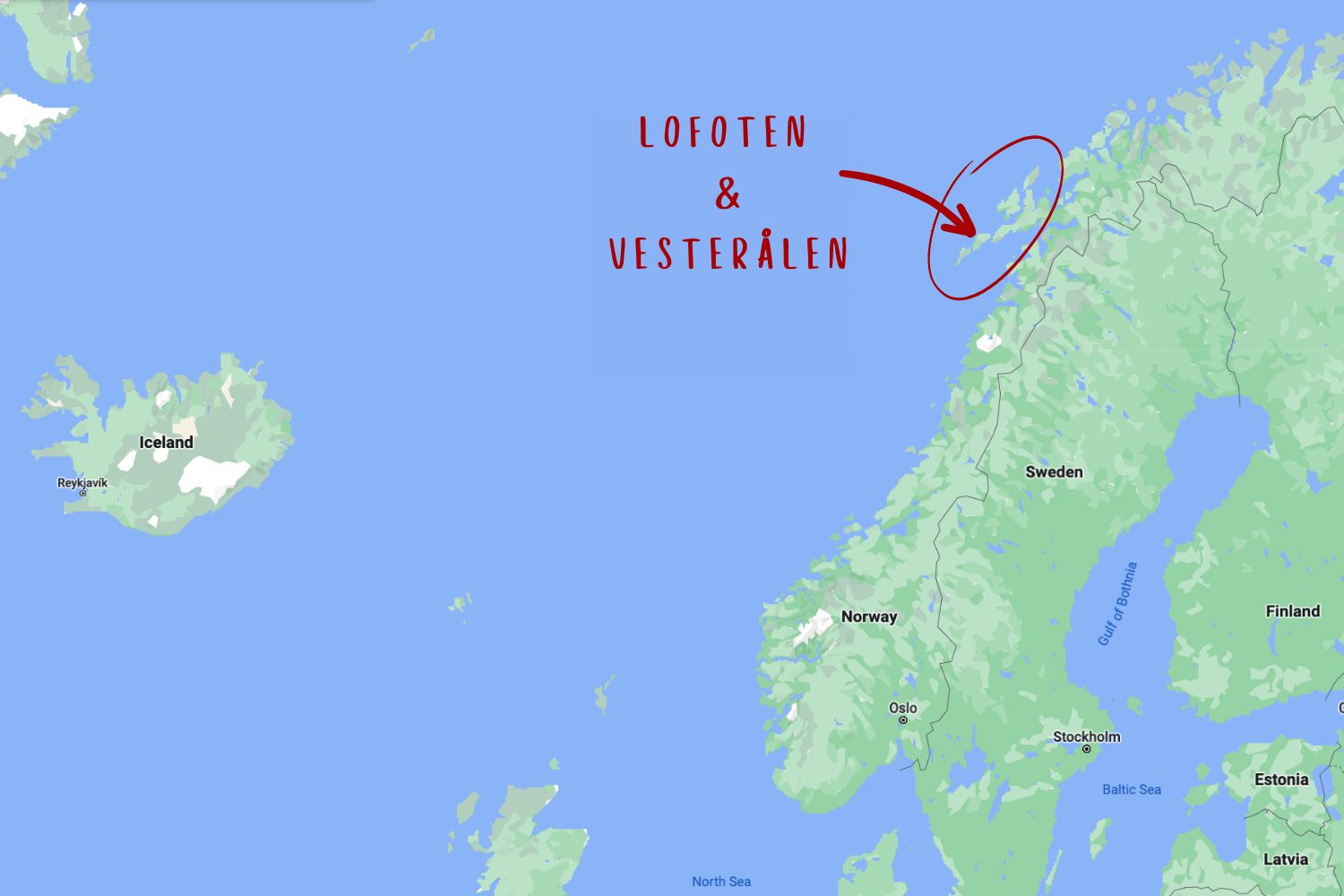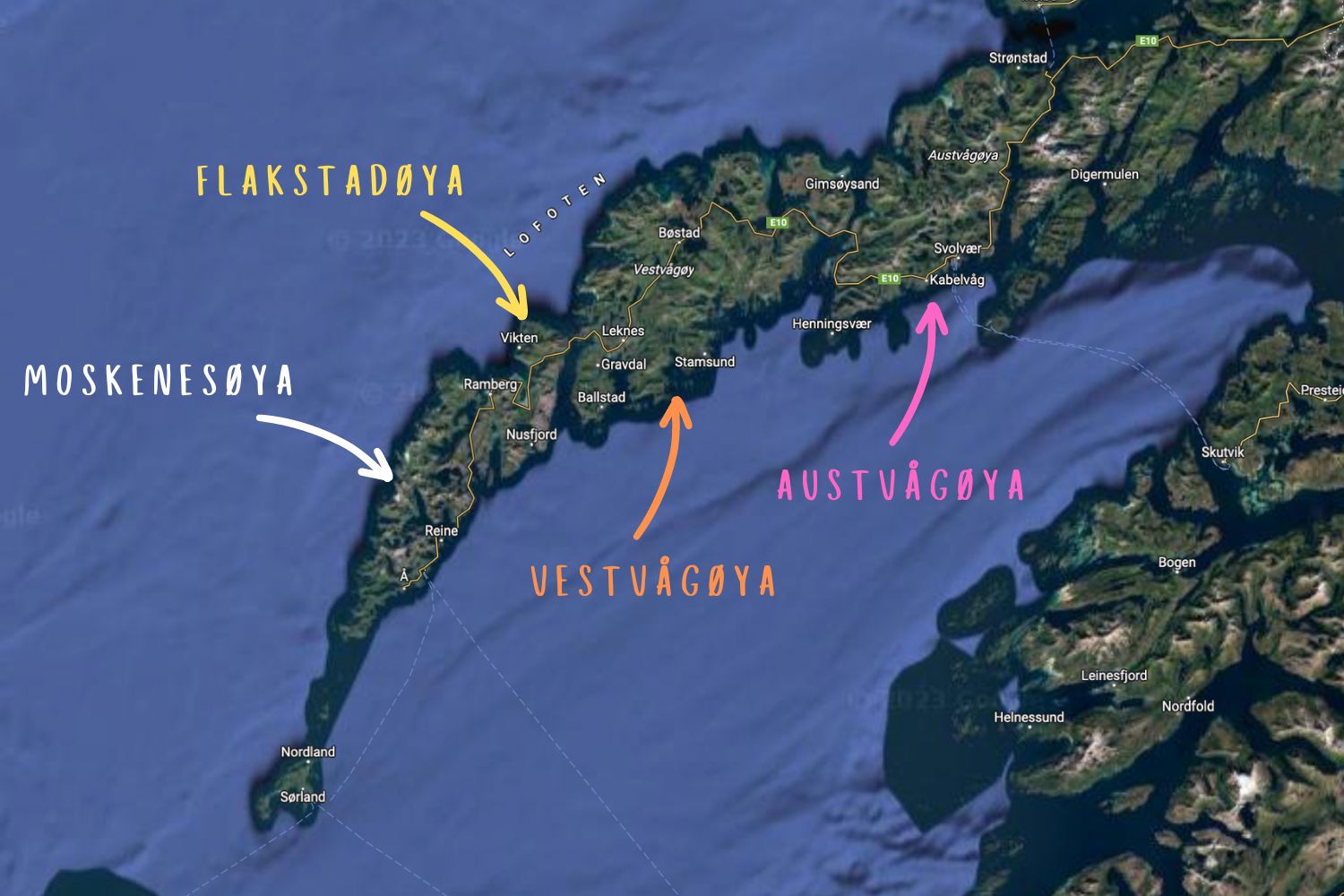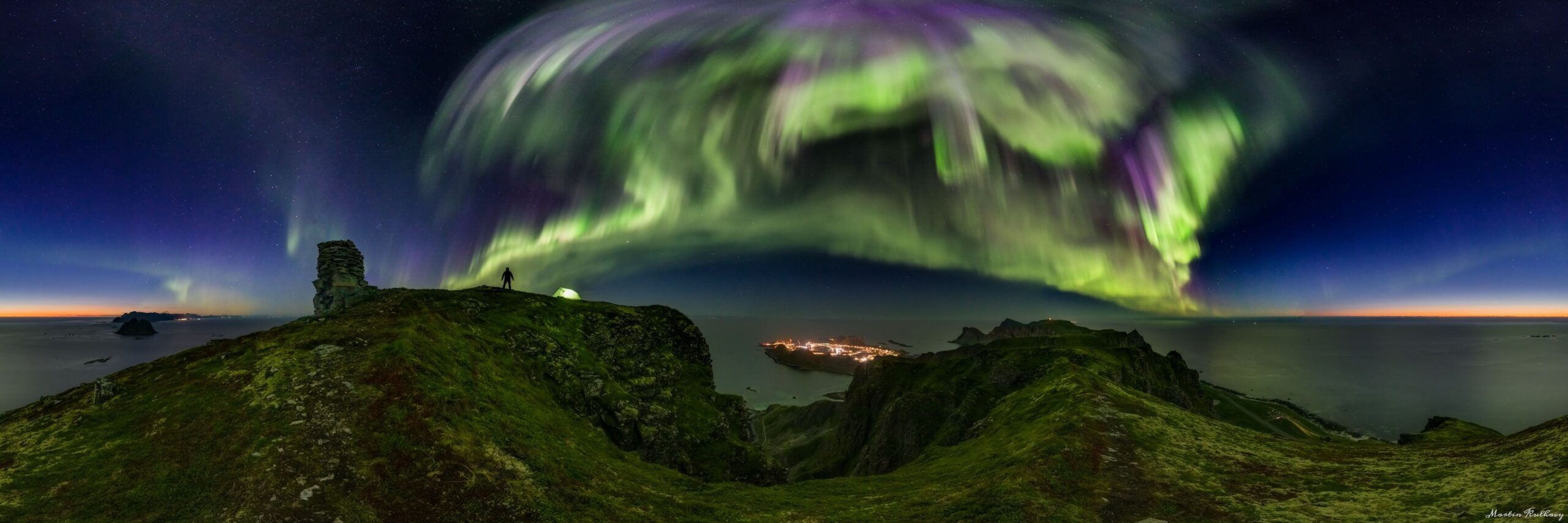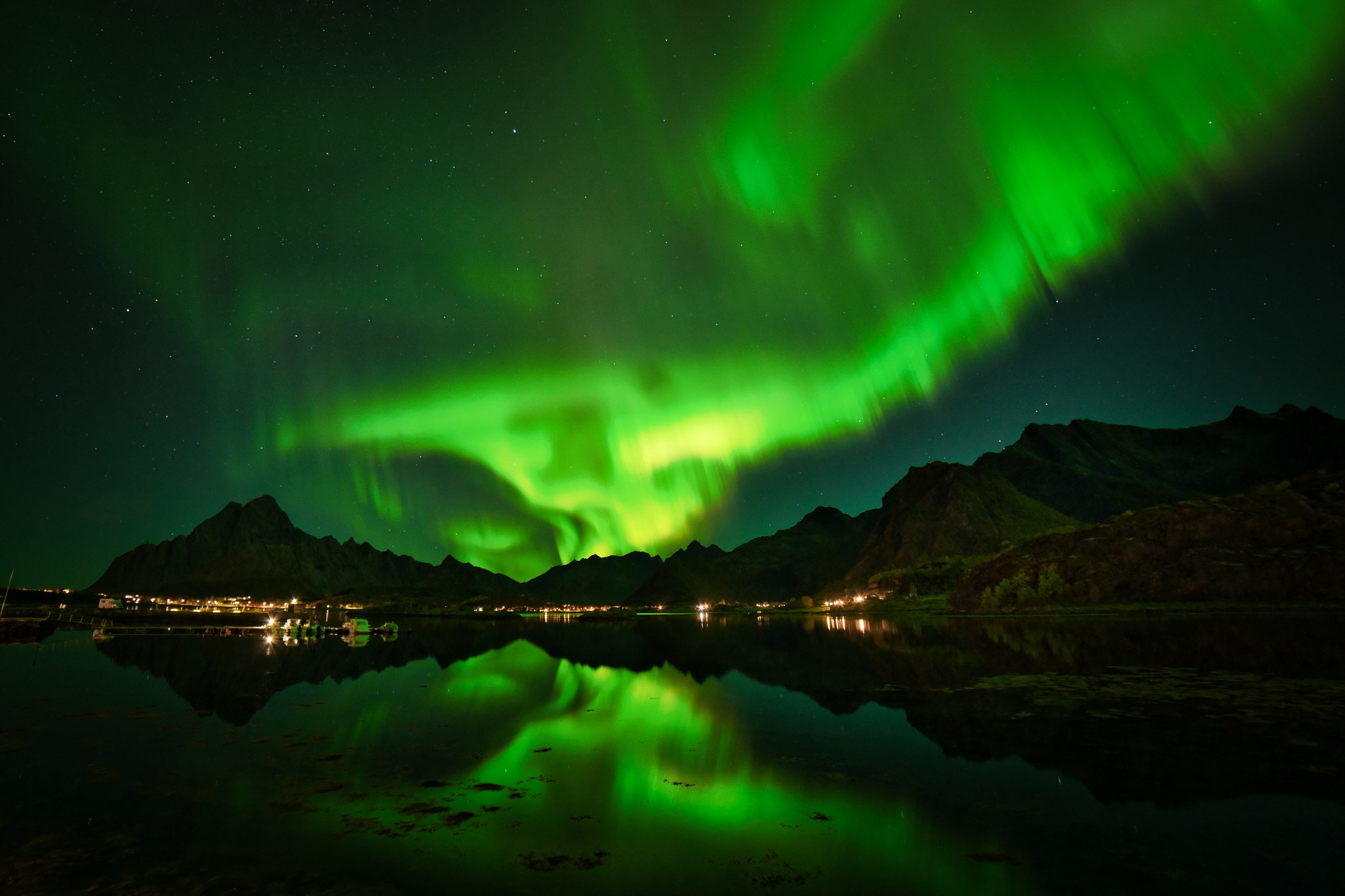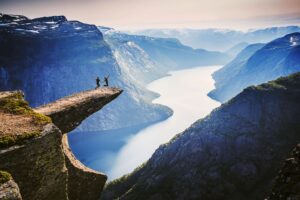Do I need a car to watch and photograph the northern lights in Lofoten?
If you’re visiting Lofoten to witness and photograph the Northern Lights without a car, it’s certainly possible, but it might require some strategic planning.
The best move is to base yourself in Svolvær since it’s the largest town in Lofoten.
It is easily accessible by bus or boat (Hurtigruten) and has tour companies that offer Northern Lights tours.
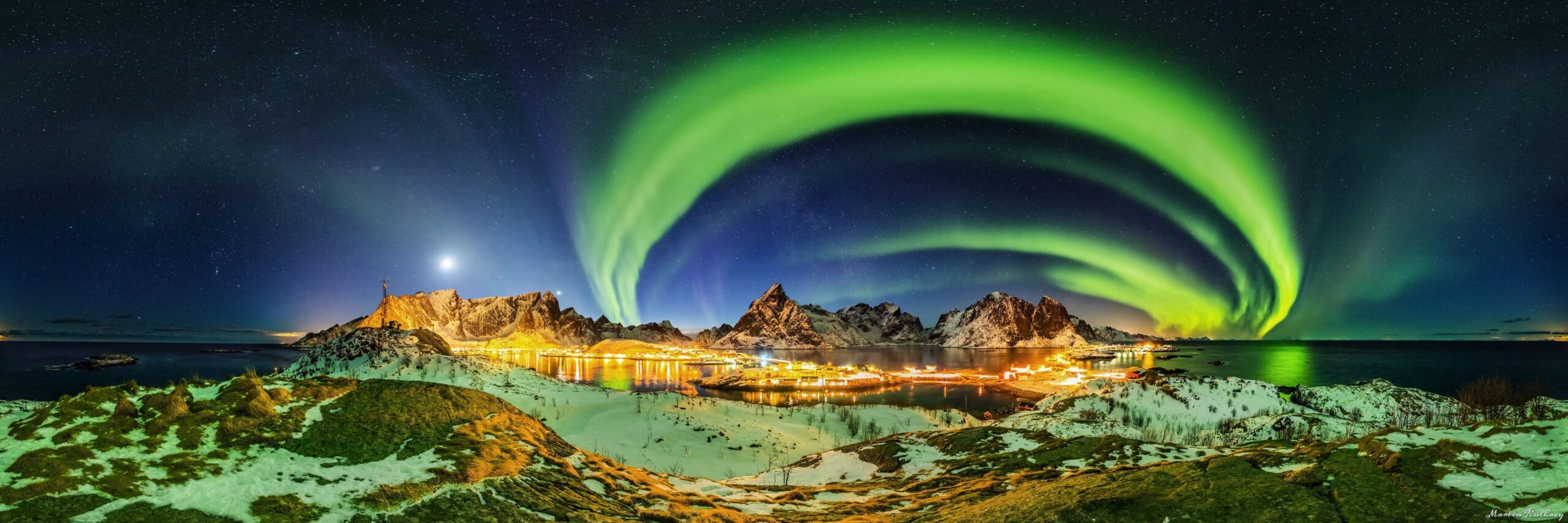
There’s a chance you could luck out and arrive in Lofoten during a favorable weather period coinciding with significant solar activity. In such cases, you might even catch a glimpse of the northern lights from your accommodation’s balcony.
However, when the aurora activity is low, and your surroundings are clouded, the experts’ insights and transportation significantly increase your chances of witnessing the northern lights during your Lofoten adventure.
Since there are no Northern Lights tours around Reine in the western part of Lofoten, exploring this region to catch a glimpse of the auroras requires embracing driving in winter conditions. That can be challenging and potentially stressful, especially for travelers not accustomed to driving on icy and snowy roads.
When can you see the Northern Lights in Lofoten?
In our Facebook travel groups, we answer questions about the Northern Lights daily. Unfortunately, there are many misconceptions about when you can see the Northern Lights, and we still notice comments where people provide completely false advice.
The most common misconception is that the Northern Lights are only visible in winter. The first Northern Lights in Lofoten appear as early as the end of August or the beginning of September when the skies become dark enough. Similarly, you can witness the Northern Lights until the beginning of April.

That being said, the prime season for Northern Lights watching is February and March. During these months, the weather tends to become more stable, and there is enough daylight to allow you to enjoy activities beyond just chasing the Northern Lights.
Another misconception we frequently encounter is the belief that the best time to witness the Northern Lights is during the polar night due to the increased darkness. Again, this is not accurate. While dark skies are a prerequisite for successful Northern Lights viewing, it is not the sole factor. Clear skies and some level of solar activity are also essential.
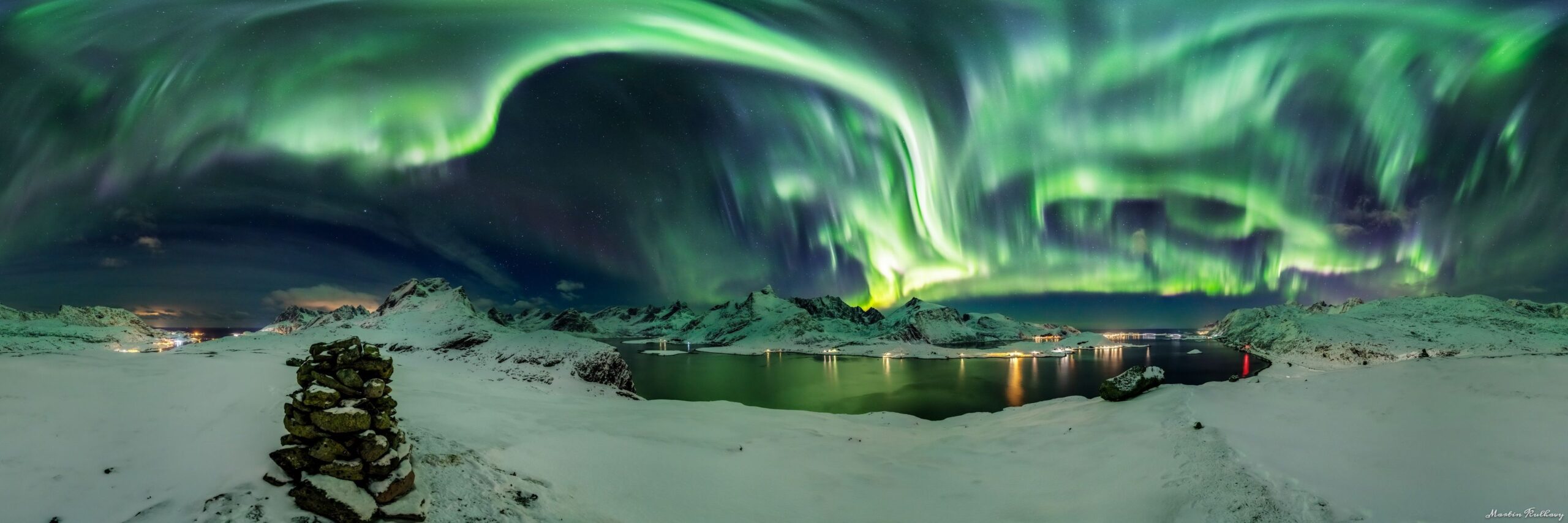
Which month is best for northern lights in Lofoten?
Pinpointing the absolute best month to experience the northern lights in Lofoten is challenging due to the various factors. Each season holds its own appeal, advantages, and challenges.
We recommend considering other activities you would like to do besides watching the Northern Lights. For instance, if you enjoy hiking in the mountains, consider visiting in September or early October. Conversely, if you’re interested in randonee skiing or experiencing the islands covered in snow, March might be your choice!
However, to make it easier for you to decide when to come to Lofoten, we are working on an overview of the best months when you can see the northern lights, along with factors such as weather, daylight hours, and additional elements that can impact successful northern lights viewing.
(function(d,s,id,u){
if (d.getElementById(id)) return;
var js, sjs = d.getElementsByTagName(s)[0],
t = Math.floor(new Date().getTime() / 1000000);
js=d.createElement(s); js.id=id; js.async=1; js.src=u+’?’+t;
sjs.parentNode.insertBefore(js, sjs);
}(document, ‘script’, ‘os-widget-jssdk’, ‘https://www.opinionstage.com/assets/loader.js’));
Where can you see the Northern Lights in Lofoten?
The locations and directions where you can spot the aurora borealis depend on factors like solar activity, the landscape’s features, and the number of city lights.
For instance, when the Northern Lights are faint, they can’t compete with the bright lights of the city that disturb your ability to see in the dark. In this situation, it’s better to find a place with very little city light where you can clearly see the northern or northwestern horizon.
Conversely, when the Northern Lights are strong, you might be able to see them even if you’re under a street light in the city center of Svolvær. They might be visible right above your head or even towards the south.
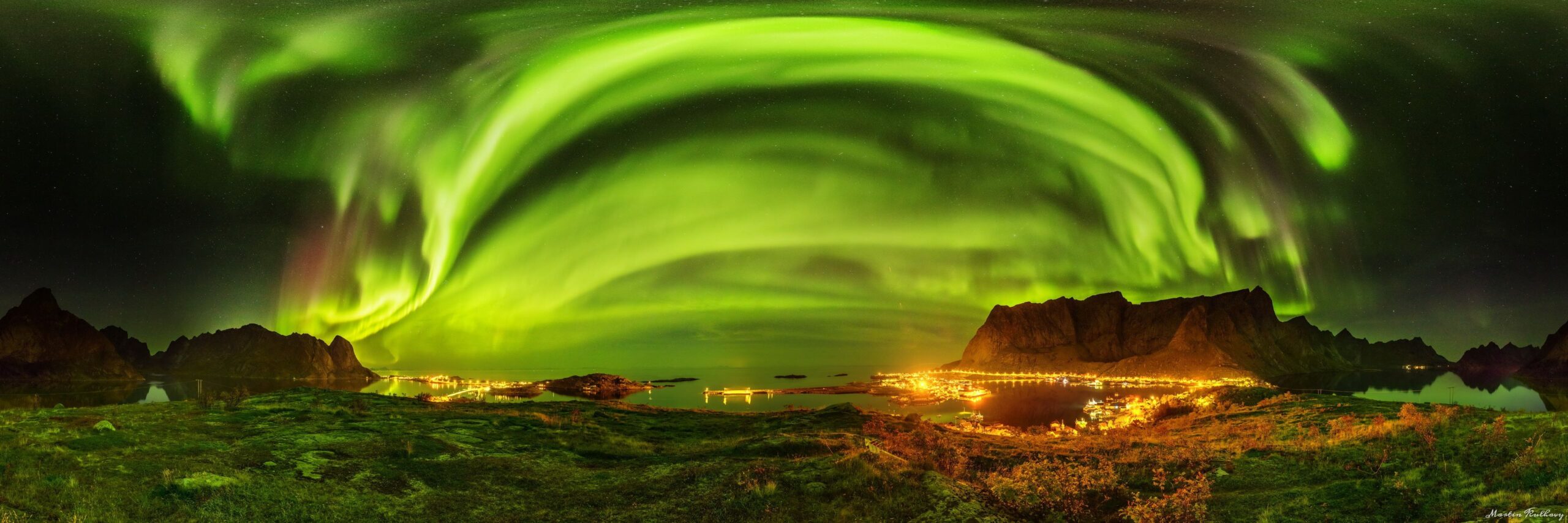
Example of a very strong northern lights
However, most nights, your best chance to catch the Northern Lights is by going to an area with minimal city light and a clear view of the northern or northwestern horizon.
Some of the most popular and easy-to-reach places that match these conditions are the beaches on Flakstadøya and Vestvågøya islands, such as Haukland, Uttakleiv, Vik, or Skagsanden Beaches.
We will discuss these sites and other locations in a separate article on The Best Places to Photograph the Northern Lights in Lofoten.
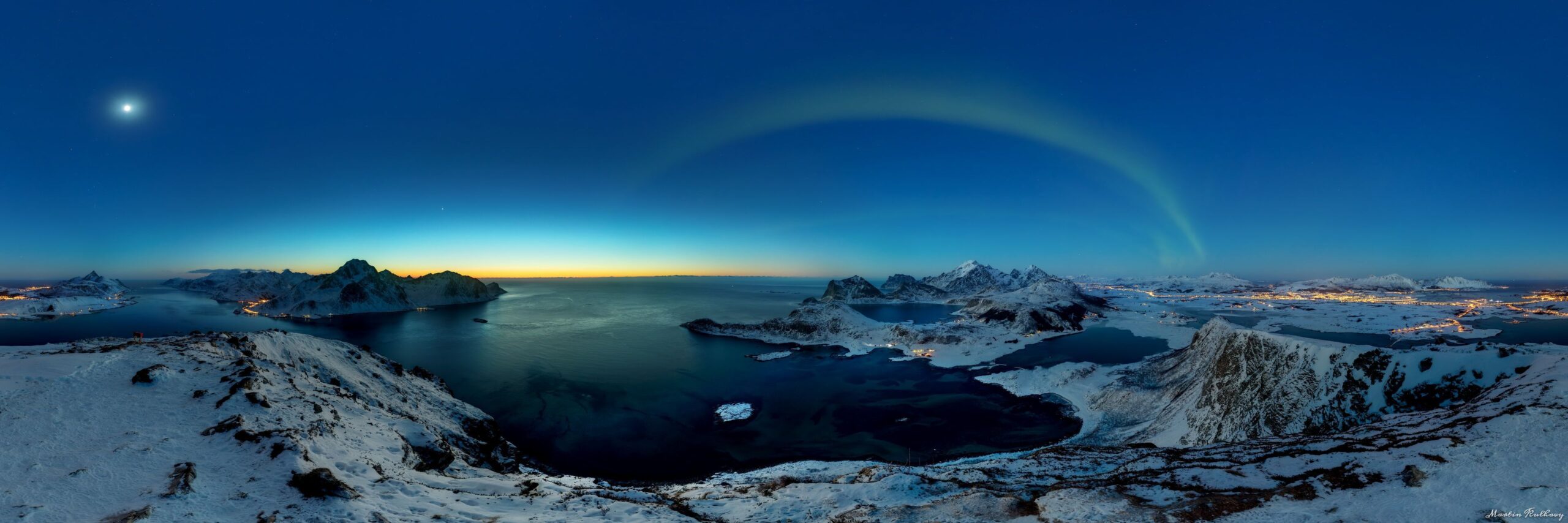
Example of a faint aurora
Where to Stay in Lofoten for the Best Northern Lights Experience
In Lofoten, there are several wonderful options for accommodations. However, certain places stand out due to their optimal locations for observing the northern lights. Some of the stays mentioned below even offer the convenience of watching the auroras right from your porch without needing to change out of your bathrobe.
It’s worth noting that most settlements in Lofoten are situated on the southern side of the islands, where they are protected from harsh weather by mountains.
However, these mountains also obstruct views to the north, making it challenging to spot faint auroras that usually appear on the northern horizon.
Here are some recommended options:
- Lofoten Links Lodges (Gimsøya, close to Svolvær) 👉 The only accommodation located on the northern coast of Lofoten that provides an unobstructed view towards the north. Secluded location on the island of Gimsøya!
- Rostad Retro Rorbuer(Olenilsøya, Reinefjorden) 👉 Our favorite place in Lofoten when it comes to the view!
- Eliassen rorbuer (Hamnøya, Reinefjorden) 👉 Favorite choice for photographers who want to capture the iconic shot of the Eliassen rorbuer from the Hamnøy Bridge. If you want to watch the northern lights out of your cabin, go for the waterfront superior cabins.
- Reine rorbuer (Reine, Reinefjorden) 👉 Classical fishermen cabins with a central location in Reine and beautiful view.
- Catogården (Reine, Reinefjorden) 👉 Cool hub for social travelers offering kayaking trips in Reinefjorden as well as sauna and hot tub with an awesome view.
- Olstind in Sakrisøy (Sakrisøy, Reinefjorden) 👉 The iconic yellow cabin that you see on many Lofoten pictures. Together with Olstinden mountain it creates the perfect foreground for northern lights photos.

Best Apps and Websites for Aurora Borealis Forecast
When it comes to experiencing the northern lights, there’s an essential factor to consider: even if the aurora activity is super high; you won’t see any northern lights unless you have a clear sky.
Weather forecasts play a crucial role in predicting when and where you can see the northern lights. Websites and apps like yr.no, ventusky, and windy are valuable tools for monitoring weather conditions.
As for northern lights apps and websites, they hold a slightly different significance in our latitude. Being positioned under the auroral oval, areas like Lofoten and Tromsø provide a chance to witness the northern lights even when the Kp index (a measure of geomagnetic activity) is as low as 0-1 (Tromsø) or 1-2 (Lofoten).
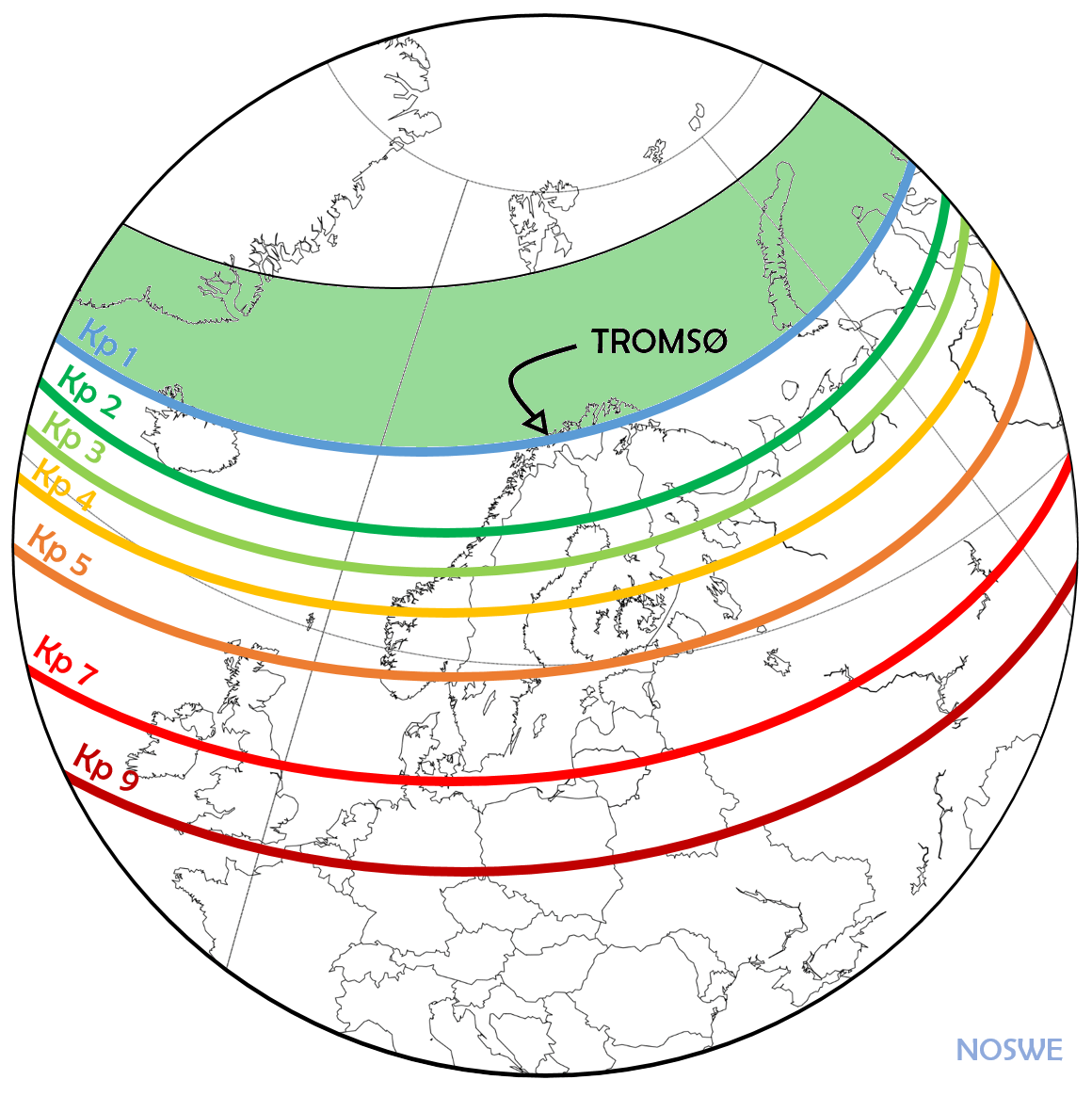
The Kp index indicates the geomagnetic activity level, with higher values suggesting stronger auroras that can be visible at lower latitudes. It helps predict where auroras might be seen, not solely their intensity. The illustration was taken from the Norwegian Center for Space Weather (NOSWE)
However, you can still utilize some helpful websites and apps for northern lights forecast in Lofoten that can assist you in predicting when the aurora will become (more) active.
👉 Norwegian Center for Space Weather (NOSWE)
This website serves as a comprehensive guide for Northern Lights enthusiasts in Norway. It shows the aurora forecasts for various locations such as Tromsø and Svalbard (sadly not Lofoten). In addition, it also displays the ovation auroral forecast specifically tailored for Norway.
👉 SpaceWeatherLive
This platform provides a wealth of information about solar activity, geomagnetic storms, and aurora predictions.
👉 My Aurora Forecast & Alerts
An app that provides detailed aurora forecasts, moon phases, and cloud coverage information, helping you plan your aurora photography outings. (Android / iPhone)
👉 Aurora Forecast
This app provides aurora forecasts and real-time aurora alerts based on your location. It offers a 3-day forecast, indicating the likelihood of northern lights’ visibility. (Android / iPhone)
Some of these resources require understanding how parameters like solar wind speed or magnetic field orientation influence the aurora activity. Graphs and tables on these pages can seem complex, but worry not! We’ll dedicate an entire article to explain how these factors influence the northern lights, so you’ll be well-equipped to interpret these indicators and enhance your aurora experiences.

#13 How to get dressed for northern lights hunting
Dressing appropriately is crucial when gearing up for a northern lights hunting adventure. Thanks to the warming influence of the Gulf Stream, Lofoten isn’t as chilly as inland regions in Norway, Sweden, and Finland.
To stay comfortable while searching for the lights, it’s all about the layering strategy. Begin with a moisture-wicking base layer to keep sweat away from your skin. On top of that, add an insulating layer, like a fleece or down jacket, to trap body heat. The final layer should be a waterproof and windproof outer shell to protect against the elements.

For a detailed guide on how to pack for a winter trip to Lofoten, including clothing suggestions and other essentials, check out our comprehensive article: “What to Pack for Lofoten in Winter.” (click on the picture)
#14 How to Photograph the Northern Lights
Photographing the Northern Lights requires some basic techniques and equipment. With modern technology, even smartphones are capable of capturing this breathtaking phenomenon. However, while smartphones can now capture Northern Lights images, dedicated cameras with manual settings offer more control over the final result.
Practice and experimentation are key to getting the best shots regardless of your equipment.
To start, find a location away from city lights to avoid light pollution. Set up your camera or smartphone on a sturdy tripod to keep it steady during long exposures.
Using a wide-angle lens helps capture more of the night sky.
CAMERA SETTINGS FOR NORTHERN LIGHTS PHOTOGRAPHY:
✅ High ISO (e.g., 800-3200)
✅ Wide aperture (e.g., f/2.8)
✅ Longer shutter speed (e.g., 1-30 seconds, depending on the strength of the aurora).
If you’re using a smartphone, you can use the “Night Mode” feature or install specific apps designed for astrophotography.
Keep your camera steady during the exposure to prevent blurriness. A remote shutter release or the self-timer function can help minimize camera shake.
For those interested in more detailed guidance, we’ll have a dedicated article on how to photograph the Northern Lights. This article will delve deeper into camera settings, composition, and post-processing techniques to help you capture the magic of the aurora borealis.
